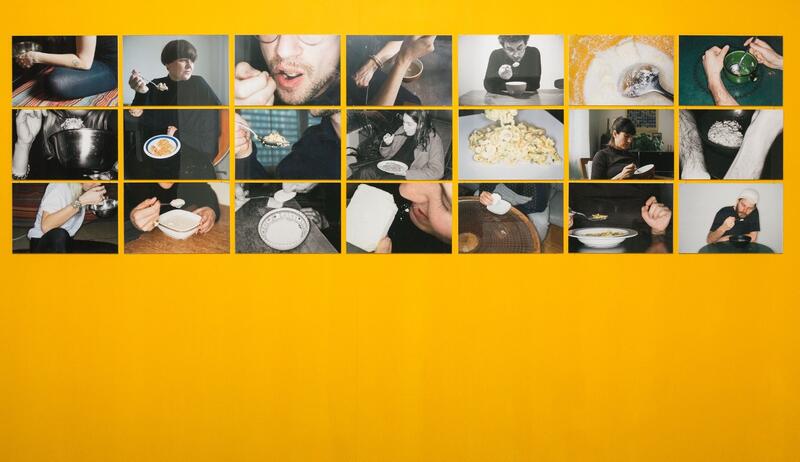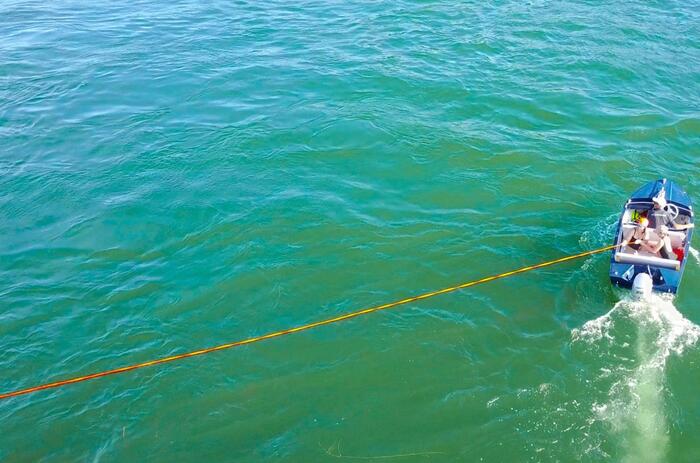THIS THIN EDGE: AN EXPERIMENT ON CONNECTION IN TIMES OF ISOLATION
Organized by la_capsula, an independent and experimental curatorial project based in Zurich that seeks to create a dialogue between the artistic and cultural production of Latin America and Swiss/local artists. Curated by Adriana Domínguez and Elena Rosauro, the exhibition is on view until March 20th.

This thin edge is a project that started during the Spring lockdown in Switzerland. The title was inspired by a phrase by renown writer Gloria Anzaldúa and it points to the two seemingly opposite forces that underlie our response to the pandemic as a society: adaptation and resistance. This thin edge starts at this intersection by imagining new future worlds and keeping politically active. It is also an experiment on how to develop art projects outside of the traditional exhibition model.
With this in mind, four artists based in different cities were invited to participate in the project and experiment on how to create an exhibition as a collective in a time of physical distance: Maëlle Gross (Swiss, currently living in Lausanne), Katherine Patiño Miranda (Colombian, currently living in New York), Sergio Rojas Chavez (Costa Rican, currently living in Basel) and Dominik Zietlow (Swiss, living in Zurich).
The curatorial strategy was aimed to develop a horizontal collaborative work between curators and artists. As a result of this work dynamics, a decision was made to use the text “Four Changes” by poet Gary Snyder as the basis of their research. The text, written in 1969, discusses four changes that our society would need to do in order to live a truly sustainable life. For every topic (population, pollution, consumption and transformation) Snyder proposes specific actions to be taken. “Four changes” is considered foundational to the environmental movement and it is as pertinent today as it was half a century ago, since “it was rooted in a mature understanding of the political ecology of power dynamics and disparities in access to resources that were ravaging our planet, its biological and cultural diversity”.
Maëlle Gross’ piece was inspired by the processes that permaculture fosters. Her installation, occupying the center of the space, consists of a rotating soil sieve which separates a mix of rubble, soil, sticks and stones in order to obtain fine soil which is ideal for sowing. The piece needs the audience to participate by throwing the rubble into the sieve, making them aware of the importance of their active personal engagement in rethinking our relation to the environment.
Katherine Patiño Miranda’s work deals with the interdependence between humans and nature and the cycle of life. She invited people around the world to join her Practice no. 91: Inter-beings by growing black bean seeds at home and following instructions given by the artist. The installation at la_cápsula includes two screens and black bean plants grown by the curators in Zurich. In one of the screens the development of the collective practice is shown, and in the other one, the artist performs the life cycle of a black bean plant, which lives up to 100 days. In a second stage of the installation, a painting and a pot are included. Both objects were created by Katherine with used cardboard that she collected from the streets of New York during the lockdown, and then processed in order to sculpt the pot and canvas. For the painting she used natural pigments that she obtained from the black beans.
Sergio Rojas questions interpersonal affections through the display of everyday objects on a bookshelf, both in the public space and in the gallery space. His installation at la_cápsula consists of the bookcase filled with several decorative items, and a series of photographs. The artist found the wicker bookshelf in the streets of Geneva during the Spring lockdown and filled it with other found objects, such as fake plastic plants, books, or plastic animals, all of them matching the aesthetics of the bookcase. He then started doing what he calls “shelf - walks”, carrying the bookshelf on his back through the streets, leaving it on the public space for the passersby to be able to have a look at it, and then talking to them about their ideas around the shelf and the items on it. This way, Sergio brings the domestic space into the public realm, opening up the possibility to imagine new narratives about wild and exotic nature. Sergio’s performance and installation show us our own desires of being close or deeply connected to nature while, in turn, foster the questioning of both our projections onto and dynamics of consumption of the natural world.
Dominik Zietlow has been reflecting on isolation and consumption during the pandemic. His research took him to be interested in eremites and preppers –people who stockpile food and water, prepare to become self-sufficient in case of a catastrophe. With this in mind, he found out that it is possible to buy survival food kits: he ordered online a bucket that contained 21 individual portions of food, that is, three meals per day, for seven days. He then chose seven people to whom he delivered food during one week. Dominik documented the delivery and spent time with each one of them, in order to cook the food together and to document them eating. The installation at la_cápsula consists of a selection of 21 photographs, as well as the survival kit bucket. Dominik’s project interrogates our current relation to food consumption, which has changed very much over the last years but even more during the pandemic –with its rising of take away and delivery–. It also seeks to visibilize isolation, while proposing sharing –of time, meals, space– as a way to counter the highly individualistic habits of our world.





